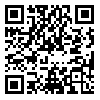Volume 4, Issue 8 (12-2014)
JRSM 2014, 4(8): 35-47 |
Back to browse issues page
Download citation:
BibTeX | RIS | EndNote | Medlars | ProCite | Reference Manager | RefWorks
Send citation to:



BibTeX | RIS | EndNote | Medlars | ProCite | Reference Manager | RefWorks
Send citation to:
Temporal distribution of attentional demands during a tennis serve. JRSM 2014; 4 (8) :35-47
URL: http://jrsm.khu.ac.ir/article-1-2213-en.html
URL: http://jrsm.khu.ac.ir/article-1-2213-en.html
Abstract: (8672 Views)
In the current research, the dual-task paradigm was used to examine the temporal distribution of attentional demands during a tennis serve. Twenty experienced tennis players to performed tennis serves. The participants were asked to respond verbally to an auditory tone presented at four probe positions (PPs) during tennis serves. The probe reaction time measure of attention was administered during four segments of a tennis serve including preparation period (PP1), from onset of backswing-loading (PP2), from onset of forward movement just before stroke in the exploding period (PP3), and after the stroke during follow-through (PP4). Reaction time was significantly longer when the probe stimulus was presented at PP4 than those of the other segments. Reaction time at PP2 was significantly greater than those of PP1 and PP3. The results showed a unique non-liner distribution of attentional demands for tennis serves. It appears that monitoring of proprioceptive feedback following movement begins, and that initiation of corrective sub-movements is necessary for skillful performance of tennis serves. So it is concluded that from a motor control perspective, PP2 is the most important segment during a tennis serve.
Type of Study: Research |
Accepted: 2022/03/31 | Published: 2015/03/15
Accepted: 2022/03/31 | Published: 2015/03/15
| Rights and permissions | |
 | This work is licensed under a Creative Commons Attribution-NonCommercial 4.0 International License. |



